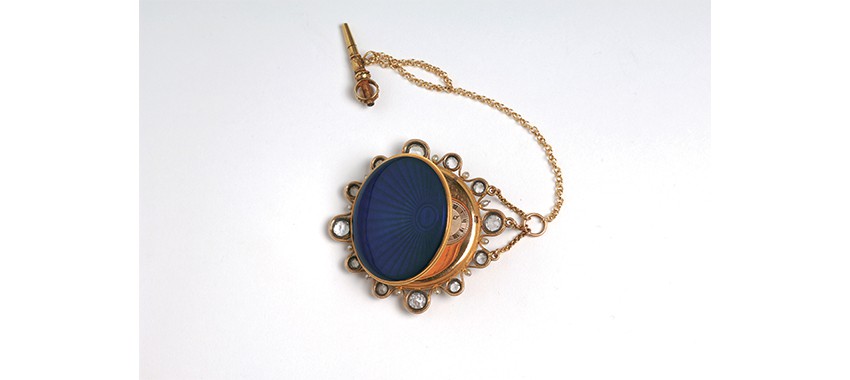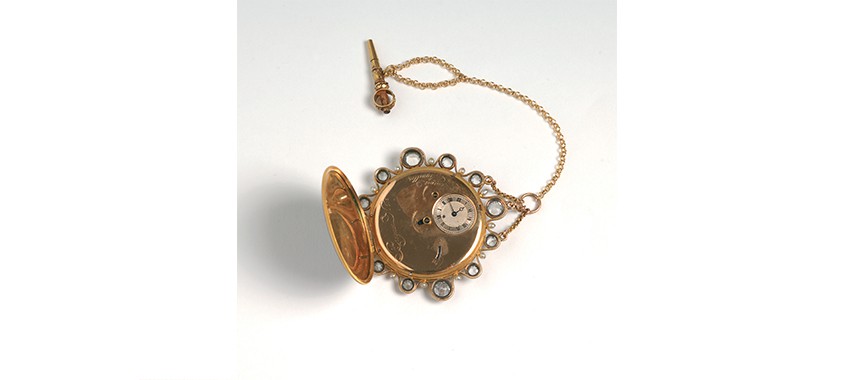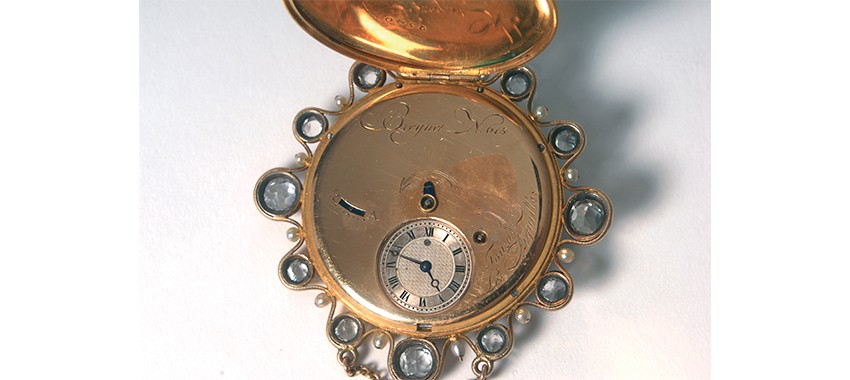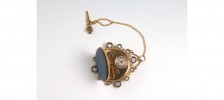Tact Pocket Watch
Braham-Louis Breguet (1747-1823)
“Montre à tact” belonging to Jerome Bonaparte, King of Westphalia
1809, signed inside “Breguet N° 615” Gold, silver, diamonds, pearls, enamel
D. 5,5 cm
Inv. 623, donation Lapeyre
Swiss-born Abraham-Louis Breguet completed his apprenticeship under an horlogist in Versailles before founding his own house in Paris in 1775; he became a master in 1784 and produced numerous technical masterpieces, as well as making many inventions and discoveries. He worked for all the courts in Europe and, during the French Empire, counted among his clients Bonaparte, Josephine, Talleyrand, and even Caroline Murat for whom he made the first ever wristwatch in 1810.
His creations include “montres à tact” which, as well as enabling the wearer to tell the time in the traditional fashion by opening the watch-case, also enabled them to tell the time in the dark by means of a hand on top of the watch-case pointing to twenty-four raised studs made of diamond and pearl, twelve large and twelve small, positioned all around the face. The diamonds indicate the hours, and the pearls the half-hours.
According to the Duke of Wellington, these “tactful” watches were used by young people who wanted to be able to tell the time discreetly and who, out of courtesy, consulted their watches by touch alone, without taking them out of their pocket.
This particularly magnificent example was sold by Breguet on 14 December 1809 to the King of Westphalia, Jerome Bonaparte. A watch of this kind might be worth 1000 to 2000 F for a simple model and might be worth up to 5000 F when decorated with precious stones.
Photographs © Fondation Napoléon- Patrice Maurin-Berthier












